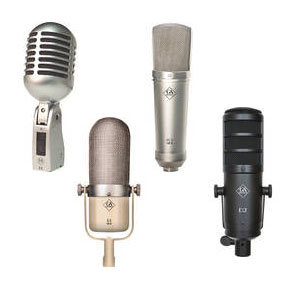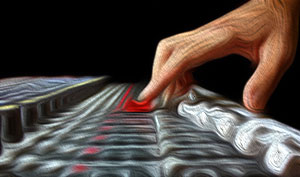 [Originally posted during the 2012 Olympics] Earlier in the week I wrote about the cool headphones worn by Michael Phelps in between swims at the 2012 Olympics. They were the SOL REPBULIC Tracks, and each time they showed him on TV, he had a different pair or had switched out the changeable bands.
[Originally posted during the 2012 Olympics] Earlier in the week I wrote about the cool headphones worn by Michael Phelps in between swims at the 2012 Olympics. They were the SOL REPBULIC Tracks, and each time they showed him on TV, he had a different pair or had switched out the changeable bands.
But on the night of his last swim, he came out with a hoodie over his headphones. And when the camera showed him in close-up, it was clear that there was a piece of white tape covering the SOL REPUBLIC logo. What’s up with that?
I’m assuming there is some sort of rule about sponsorship or anything that might make it appear that an athlete is promoting a product during the Olympics. I certainly understand that. But it seemed a bit late to put that genie back in the bottle considering the SOL REPUBLICS loud and proud at his 6 previous events this week. And I think it actually called more attention to them to have a piece of tape plastered over the logo. Heck, on an HD screen you could actually see the logo through the tape. Oops. Oh well. I guess they tried.
If you’re interested in getting your own SOL REPUBLIC headphones, click here. Doh!
Archives for May 2013
Tips For Doing Decibel Math
Decibels, more commonly abbreviated as “dB,” are a measure of audio loudness and energy and something we talk about a LOT in audio recording as well as live audio. You can’t say a lot about equalization (EQ) or volume, especially relative volume (how much louder or less loud something is that it was before or than other tracks, etc.) without referring to dBs.
The problem (especially if you were not a math fan in school) is that doing any kind of calculations involving decibels is most definitely not straightforward. dBs involve logarithms (logs). Yeah, that’s right. You remember the scary button on your calculator with that word on it? Well if you’re going to do any dB math, you gotta deal with logs.
Fortunately, Chuck McGregor just wrote this excellent guide to doing dB calculations without the pain. See the full article here: http://www.prosoundweb.com/article/a_practical_guide_to_key_audio_calculations/?utm_source=feedburner&utm_medium=feed#When:18:34:18Z
Golden Age Project – Entry Level Pro Audio Microphones
 I recently discovered a company called The Golden Age Project that sells what they call entry-level microphones and other cool audio products like preamps, equalizers, compressors and accessories. From their website: We are dedicated to the idea of giving you the best price/performance ratio in the industry!
I recently discovered a company called The Golden Age Project that sells what they call entry-level microphones and other cool audio products like preamps, equalizers, compressors and accessories. From their website: We are dedicated to the idea of giving you the best price/performance ratio in the industry!
In the interest of full disclosure I have to admit that I do not own any Golden Age Project products. When I say “just discovered” above, I mean as in I just read about them 5 minutes ago. This will change, of course. I plan to acquire some of their wares as soon as may be. But until then I thought I’d share what I know so far, mainly because their philosophy of providing the best price/performance ratio is quite consistent with mine. I try to get the word out that you can enter into the world of professional audio without spending nearly as much as you think you’d have to.
So here are a few of their products:
 D2 – Large Diaphragm Dynamic Microphone (similar to the RE20 radio broadcast mic)
D2 – Large Diaphragm Dynamic Microphone (similar to the RE20 radio broadcast mic)
![]() FC 1 MK II – F.E.T Condenser Microphone
FC 1 MK II – F.E.T Condenser Microphone
![]() F4 – Multi-Pattern Small Capsule Condenser Microphone
F4 – Multi-Pattern Small Capsule Condenser Microphone
 R1 MKII Ribbon Microphone
R1 MKII Ribbon Microphone
 D1 Classic-Style Dynamic Microphone
D1 Classic-Style Dynamic Microphone
![]() PRE-73 MKII – Vintage Style Preamplifier
PRE-73 MKII – Vintage Style Preamplifier
As soon as I get an opportunity to review these items I will let everyone know with a series of new posts.
They look awesome, but of course it’s how they sound that matters.
Cheers,
Ken
Mixing Music: The Art And the Science
 I just read a fantastic article by Recording Magazine called The Art and Science of the Mix: Methods and Approaches to Mixing. It does focus on music mixing – so for the voice-over-centric readers, it may or may not be of as much interest to you. But if you do any music mixing, this article rocks!
I just read a fantastic article by Recording Magazine called The Art and Science of the Mix: Methods and Approaches to Mixing. It does focus on music mixing – so for the voice-over-centric readers, it may or may not be of as much interest to you. But if you do any music mixing, this article rocks!
Obviously it reminds us that mixing music is a combination of art and science. But from my point of view, the science – or put another way, the methods and reasons for those methods – come first. Otherwise we wouldn’t have as many brushes and paints and palettes and easels (OK, you see I’m running with the “art” metaphor here:)) to create the art we envision.
Fortunately the author, Bruce Kaphan, gives plenty of useful concrete tips to create better mixes, such as his typical pan settings for drum kits and other instruments, how he begins a mixing session, etc.
One other thing that comes through in the article is the presupposition that there will be three distinct people involved in a music recording project: the person recording and preparing the tracks (recording engineer), the person mixing the project (the mix engineer), and the person mastering the project (the mastering engineer). See our post
Recording Engineer, Mix Engineer and Mastering Engineer – Oh My for more information on what the heck I mean by all that.
Anyway, do yourself a favor if you mix music and get thee to this article, which you can read in its entirety here: http://www.recordingmag.com/resources/resourceDetail/122.html
Audio Recording Awesomeness In 30 Minutes A Day
I just read an article by Graham Cochrane – The 30 Minute Rule For Awesomness – where he brings up an excellent point about improving at audio recording pretty rapidly without having it seem like some huge daunting task. It’s pretty simple. Just do 30 minutes a day. Think about it. You probably spend that amount of time looking at cat videos each day:). Certainly I know I spend a lot of non-value-added time each day that easily adds up to 30 minutes.
Seriously though. His post grabbed me because basically he talks about what I talk about a lot. Audio recording techniques are truly not hard to learn IF you have the right teacher. People like Graham and I, as well as Joe Gilder, Bjorgvin Benediktsson, Bobby Owsinski, Ian Shepherd and others are attempting to be the right teachers so that a lot more people can get into recording awesome audio.
Of course, I also liked Graham’s title since it used the word “awesomeness”:). Obviously I didn’t make up the word, but it’s in the title of our flagship learning course – The Newbies Guide To Audio Recording Awesomeness.
So no, you don’t have to go to an expensive and years-long recording school to learn audio recording these days. If you take 30 minutes a day and read/practice something you learned from any of the folks mentioned in this article (and there lots of others out there whose names didn’t spring to mind as I write this over my first cup of tea), your recordings will sound awesome in a very short time.
Cheers!
Ken